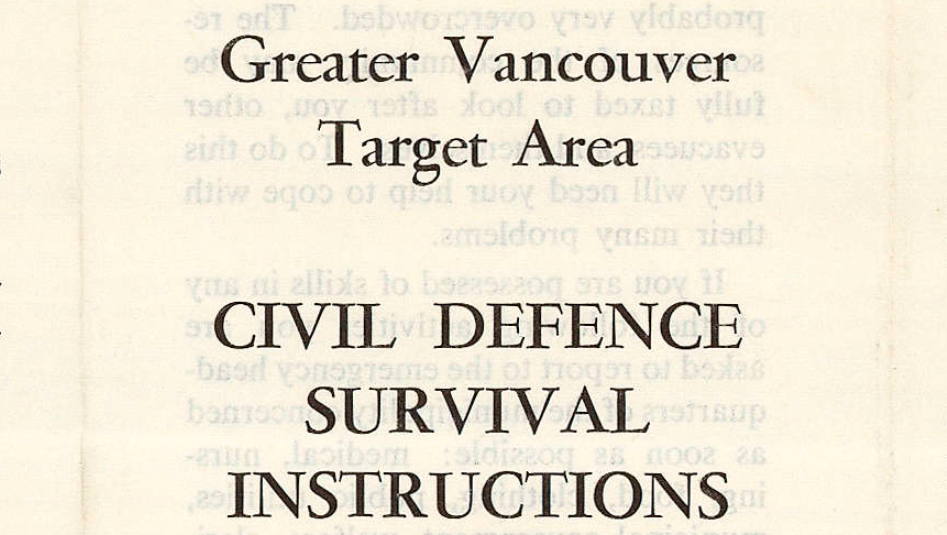Have you ever heard of the Greater Vancouver Target Area?
This brochure from 1964 focuses on the area, and what would happen if it were hit with a 5-megaton bomb. This was during the Cold War build-up, when hundreds of nuclear weapons were being built.
"The Government believes that if Canada were attacked, Vancouver could be one of the more likely target areas," states the brochure under the heading "THE THREAT."
Titled Greater Vancouver Target Area Civil Defence Survival Instructions, it's a guide meant for people living in the area to keep on hand in case the day came when a 5 megaton "H-bomb" exploded in or over the city.
It's not quite a step-by-step guide, but it does work chronologically, with descriptions of the warnings and what to do if you hear them (such as listen to the radio, don't use a phone).
It also describes, in rather formal detail, what would happen if a 5 megaton bomb was used. Alongside the light, heat and radiation, it also goes into the blast and how likely it would be to survive. There's a simple, if disturbingly at ease, guide:
"The chances of survival in a basement have been assessed as follows:—
Up to 3 miles from the burst—negligible.
From 3 to 5 miles from the burst—slight.
From 5 to 10 miles from the burst—fair.
From 10 to 15 miles from the burst—good."
It also notes that family shelters that would be useful would also be "so expensive as to be beyond the means of most people."
As for nuclear fallout, it goes into a basic description of how it'll spread out over the area and land, noting that it would "extend up the Fraser Valley."
"As it is carried by high-level winds, it falls in a continuous, but irregular downwind pattern some 50 miles wide and 200 to 00 miles in length."
For those that do survive the initial blast, it has four suggestions on how to proceed (essentially stay and shelter or evacuate). For those that decide to evacuate, either before or after the attack, there's a map providing the best routes out of the city and into the interior.
There are also tips for those evacuating, including one for drivers.
"At the first flash of a brilliant light the driver should duck his head, but keep going if at all possible," states the brochure. "After the blast has passed, you should close your windows to keep out the dust."
Mixed with the implicit sexism of assuming the driver is male (the brochure does this several times) is some pretty dark advice.
For those that make it to the highways, the brochure notes a system will begin to become apparent.
"Because of the natural bottlenecks on roads leading out of Vancouver, and because distances from Hope to most Central Interior communities are great, it will be necessary to set up certain staging areas," notes the brochure, adding that except for a route that goes into the US for a short distance, no one will be admitted to the USA.
At the staging areas, they ask anyone with emergency skills, like nursing, policing, mechanics and carpentry. The brochure also mentions several times the importance of working together, including "any selfish determination...would bring about chaos and danger to thousands of people."
It concludes with a message from the Vancouver Zone Co-ordinator, stating that it's their hope the plan would never have to be used, but if it does, people "co-operate whole-heartedly."
There's also some further reading suggested, including 11 Steps to Survival and Fallout on the Farm.



